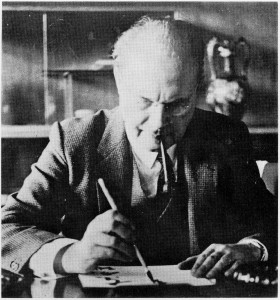| Flaptekst: |
Hsi K'ang, 223-62, poet, philosopher, painter and musician,
was one of the most remarkable scholars among the brilliant
men who, in the third century, lived at Lo-yang, the capital
of the short-lived Wei Dynasty. Not only was Hsi K'ang a
gifted writer and a great lute player, he also had the reputation
of a profound philosopher. Yet this scholar who preferred the
comtemplation of life beyond to the noisy affairs of this
world had the courage to live up to his lofty ideals. A loyal
servant of the Wei emperors, he fearlessly opposed the Ssû-ma
Generalissimo who had usurped the Imperial prerogative.
When his friend was innocently thrown into prison by the
dictator, Hsi K'ang stood up for him at once although he fully
realized that by doing so he signed his own death sentence.
When, at last, his hour [of] execution approached, Hsi K'ang
calmly drew his beloved lute unto him and, unperturbed,
played his last melody.
Until the appearance of this work almost thirty years ago,
Western writers had not done justice to this great figure. So
cursorily indeed had Hsi K'ang been treated that his character
and career were, at times, grossly misrepresented. Dr. R.H.
van Gulik made in this present work the first attempt at
revealing the greatness of a man who belongs not only to
ancient China but to mankind at large. Hsi K'ang's life and
work are described here as they arise from the carefully studied
contemporary documents themselves.
Hsi K'ang's claim to fame is especially based on his Ch'in-fu
or Poetical Essay on the Lute. This difficult specimen of
Chinese artistic prose, an important source for our knowledge
of ancient Chinese music, is once again made available in its
first translation into a Western language. Copious notes are
added, and thus a significant document is made accessible to
all students of China and of Oriental music.

Robert Hans van Gulik was born in Holland in 1910, and
died there in 1967 while on home leave from his ambassadorial
duties in Tokyo. Recipient of B.A. degrees in Law and Politics
and in Chinese and Japanese from the University of Leyden
(in 1933) and of a Litt. D. from the University of Utrecht
(1935), he had already mastered enough Chinese in his
university days to be able to translate difficlut Chinese texts
and to write in Chinese script. He joined the Netherlands
Foreign Service in 1935 and for many years represented his
country in China, Japan, Lebanon, Malaysia, and Washington.
He took up his last post, Ambassador of the Netherlands to
Japan, in 1965.
In addition to his diplomatic work, he maintained such an
interest in scholarly pursuits that he acquired perhaps an even
greater name for himself as an authority on oriental literature,
art, and history; as a skilled calligrapher whose script wins
the admiration of even experts; and as the prolific author of
several Chinese detective stories whose hero, Judge Dee, can
take a place among such greats as Sherlock Holmes and Perry
Mason.
His scholarly works include: Hayagriva, the Mantrayanic
Aspect of Horse-Cult in China and Japan (1935); Erotic Color
Prints of the Ming Period (1951); Chinese Pictorial Art as Viewed
by the Connoisseur (1958); Sexual Life in Ancient China (1962);
The Gibbon in China, An Essay in Chinese Animal Lore (1967).
|